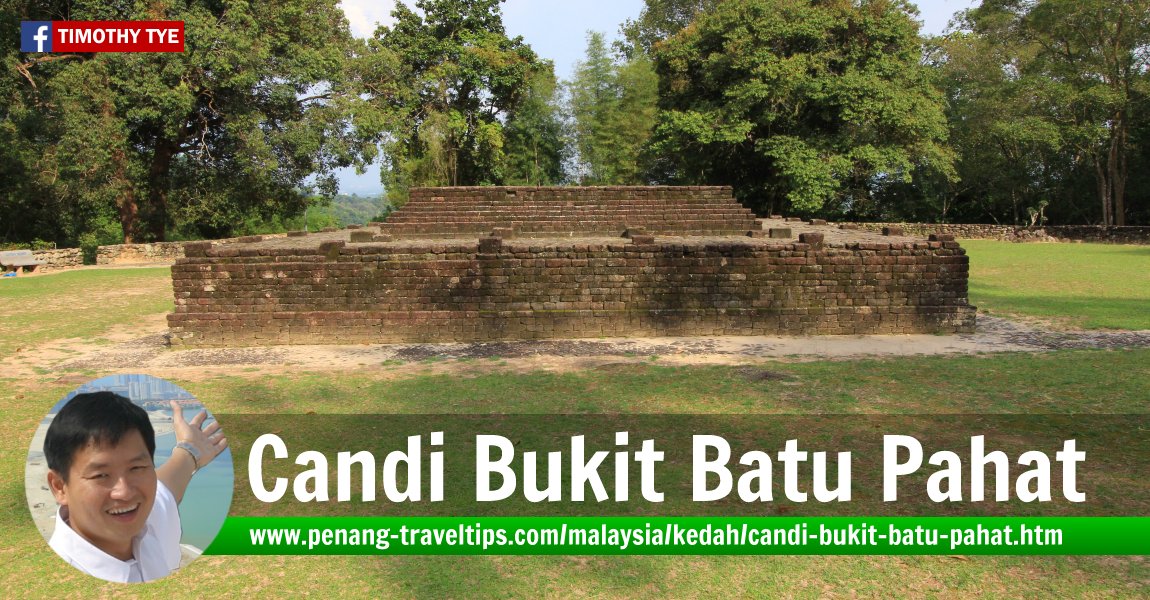 Candi Bukit Batu Pahat, Bujang Valley, Kedah (25 July, 2015)
Candi Bukit Batu Pahat, Bujang Valley, Kedah (25 July, 2015)
Candi Bukit Batu Pahat (GPS: 5.73916, 100.4136) is the most celebrated monument at the Bujang Valley Archaeological Park. It is the only ancient temple that was rebuilt in situ, after which other ancient monuments were also relocated to be in its vicinity. In addition, the Bujang Valley Archaeology Museum was also built a short distance from the candi.
Candi Bukit Batu Pahat, also called Site 8, was discovered in 1936 by H.G. Quaritch Wales, an enthusiast of ancient civilizations and member of the Greater India Society. He and his wife Dorothy had been conducted excavations in Bujang Valley, and together, they managed to unearth some 30 ancient sites. Their work went a long way in helping us understanding the ancient civilization that flourished in the Bujang Valley.
Candi Bukit Batu Pahat is a monument built of granite stones. According to historian Dato V. Nadarajan, the stones must have been obtained from the waterfalls of nearby Sungai Merbok Kechil, which is visible from the site itself. The layout of Candi Bukit Batu Pahat resembles that of a modern Hindu temple - and by all account, it was a Hindu temple.
As with modern Hindu temples, Candi Bukit Batu Pahat has a mandapa, or pillared porch in front of a vimana, or walled up sanctuary, where the image of the deity is installed. That deity sits on a pedestal, or Yoni, which is attached to the Somasutra, or channel, which emerges on the right side of the sanctuary as a spout, or Jaladwara. When the deity is bathed, the water drains down the Somasutra and can be collected as holy water by devotees at the Jaladwara. Having visited modern Hindu temples, I see that this same layout is true even today.
Various items have been discovered during the excavation of Candi Bukit Batu Pahat. They include stone boxes, or caskets, with lids. Within these are various religious items, such as gold foils in the image of Hindu deities, for example the god Shiva and goddess Sakti. Gold and silver foils in the image of Nandi, the bull, is also discovered here.
 Side view of Candi Bukit Batu Pahat (25 July, 2015)
Side view of Candi Bukit Batu Pahat (25 July, 2015)
 Front view of Candi Bukit Batu Pahat (2 January, 2013)
Front view of Candi Bukit Batu Pahat (2 January, 2013)
Candi Bukit Batu Pahat is  on the map of Bujang Valley Archaeological Sites
on the map of Bujang Valley Archaeological Sites
Back to Discover Kedah mainpage; return to the Bujang Valley Archaological Sites main page
 Latest updates on Penang Travel Tips
Latest updates on Penang Travel Tips

Copyright © 2003-2025 Timothy Tye. All Rights Reserved.

 Go Back
Go Back